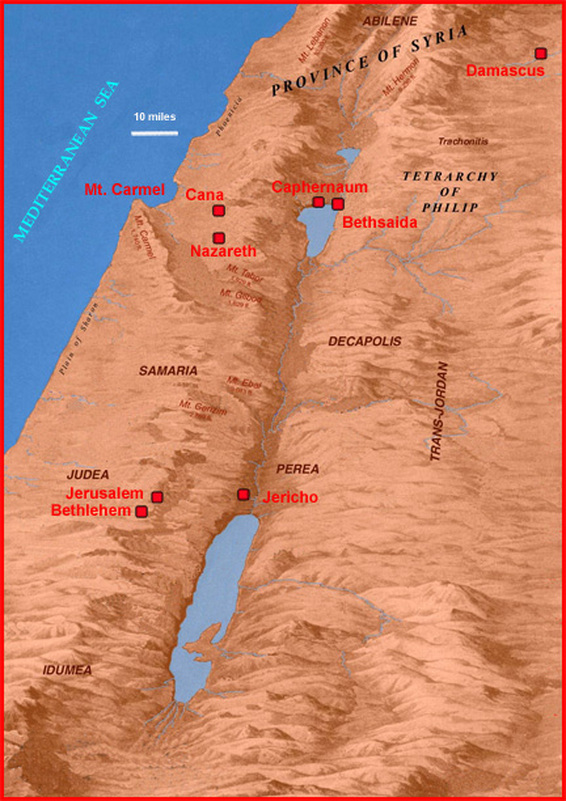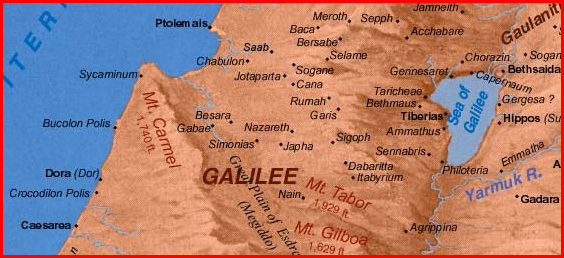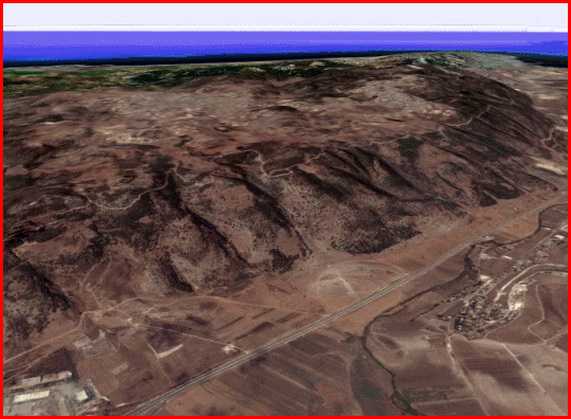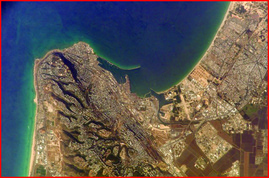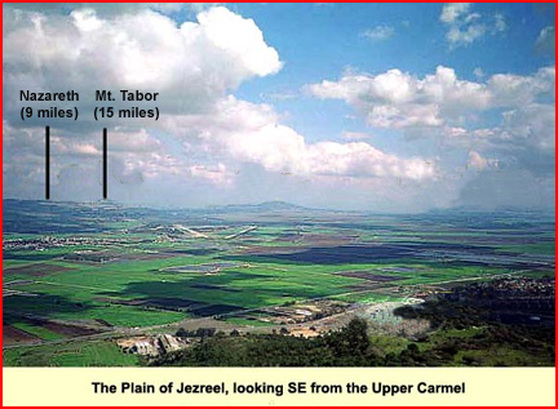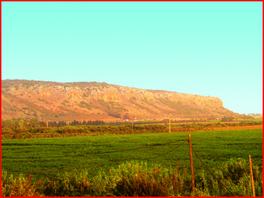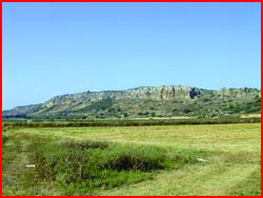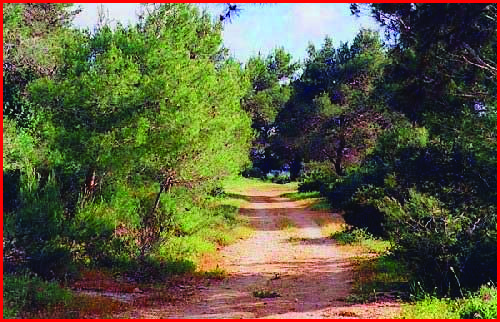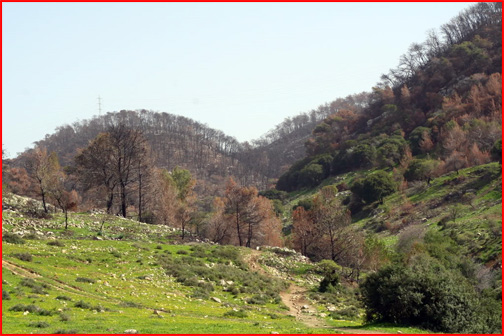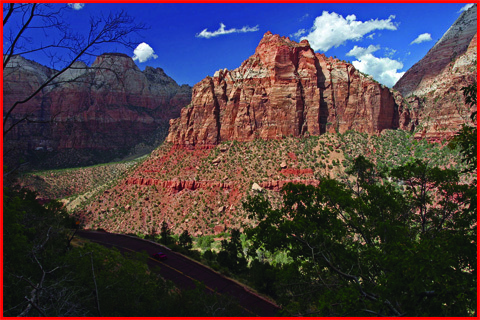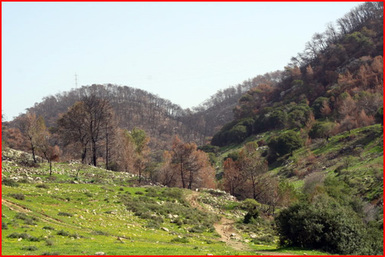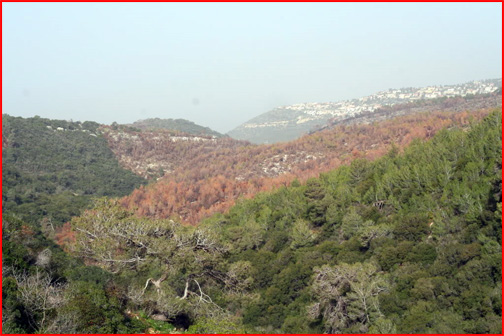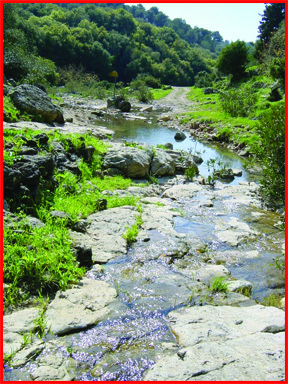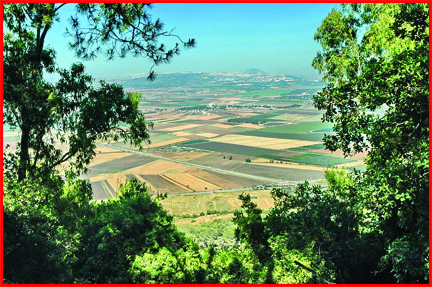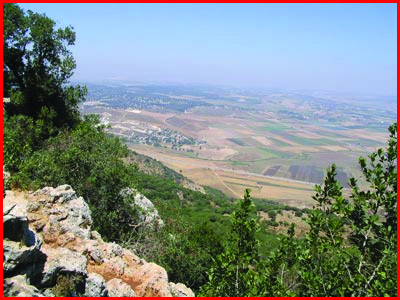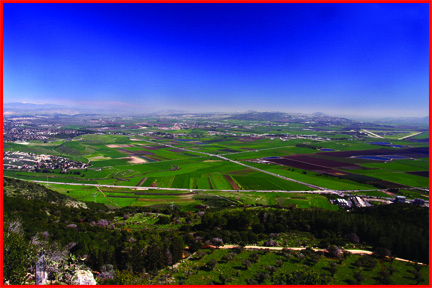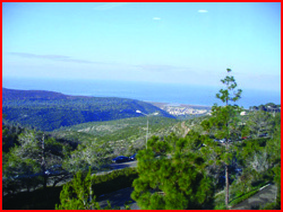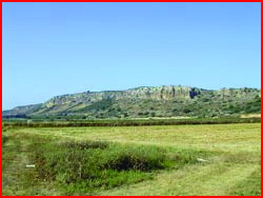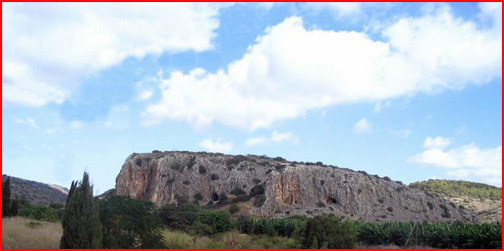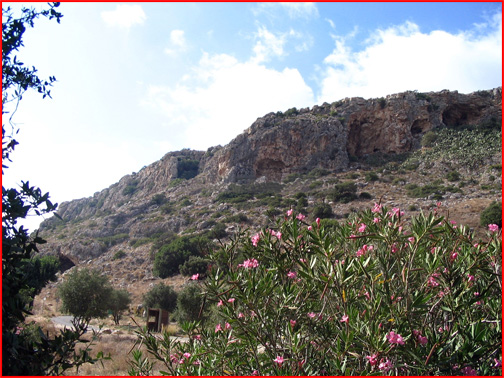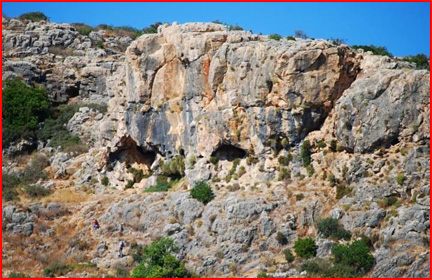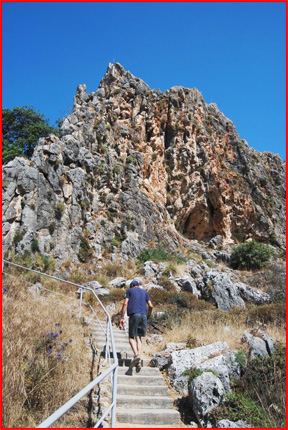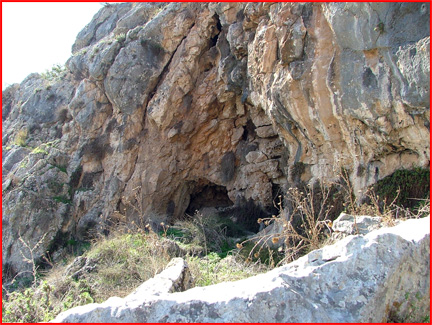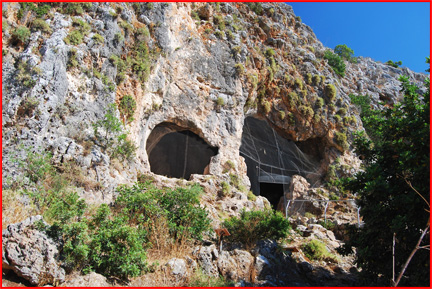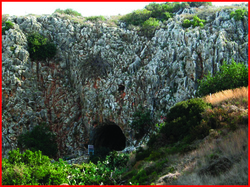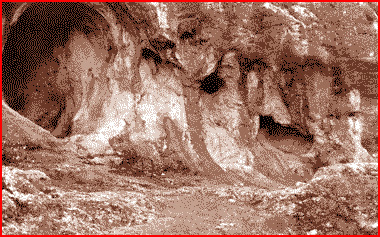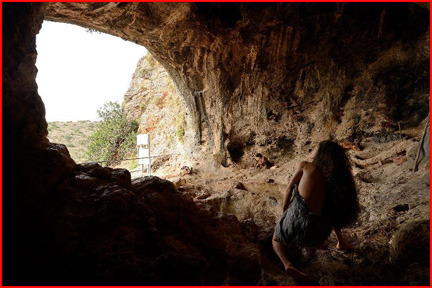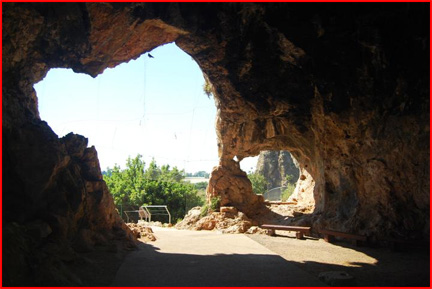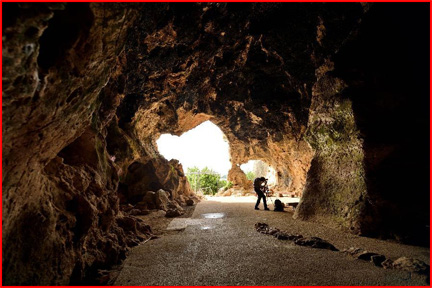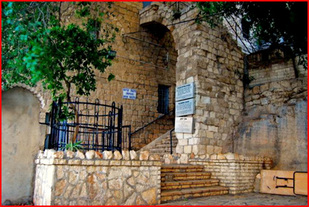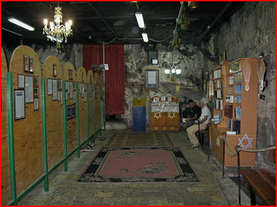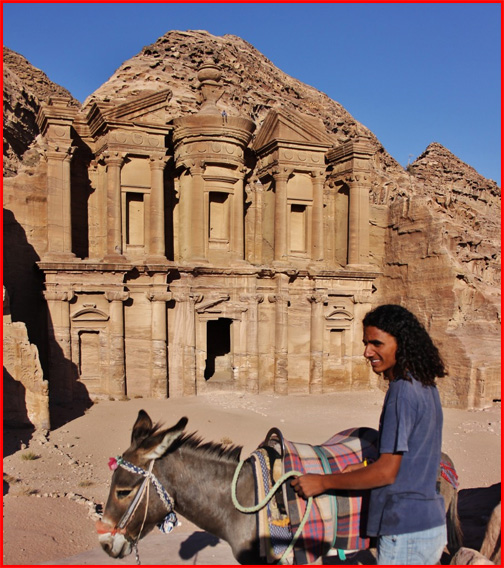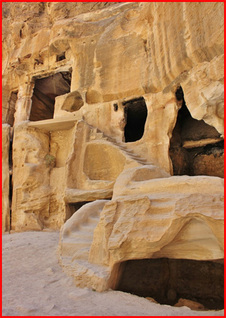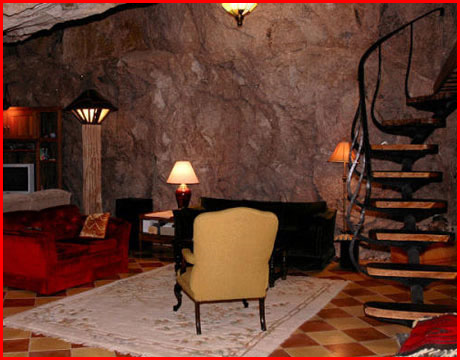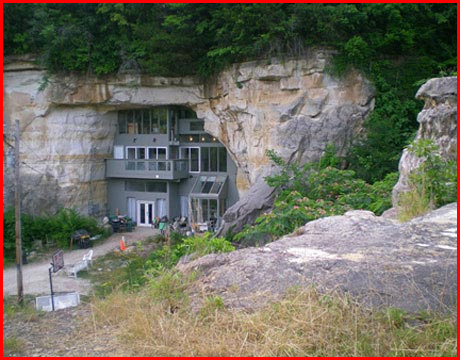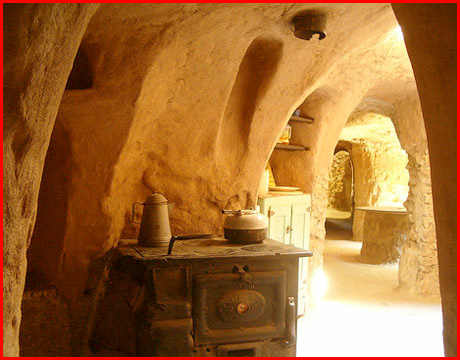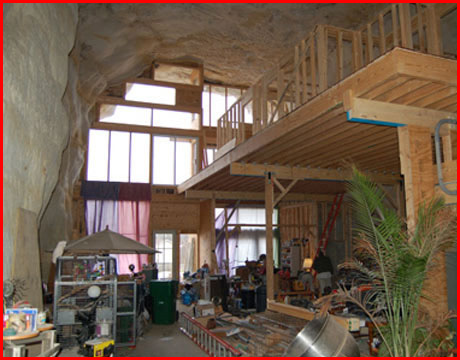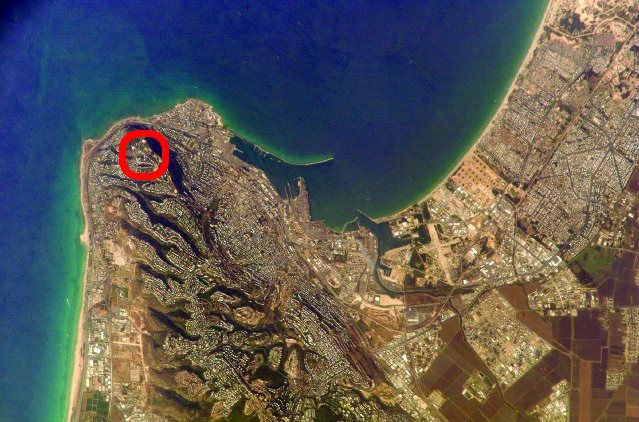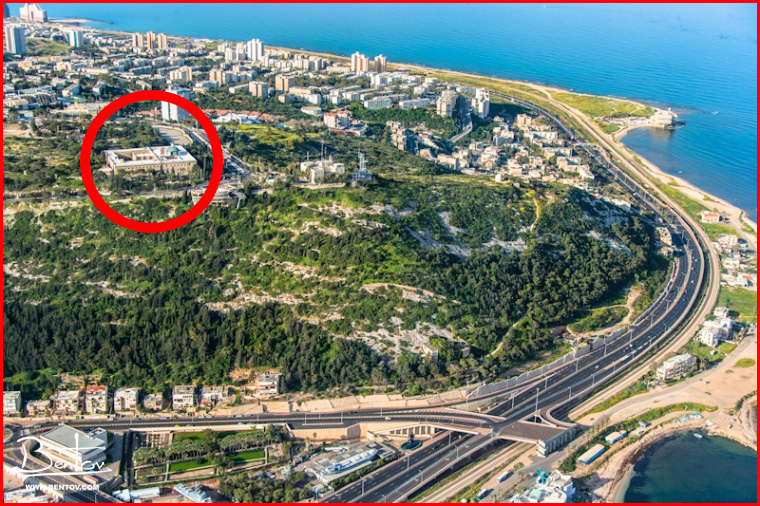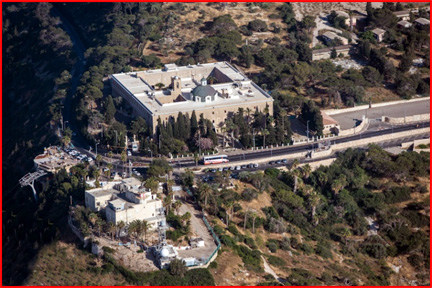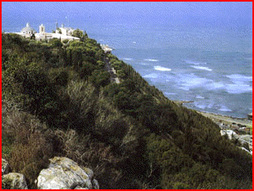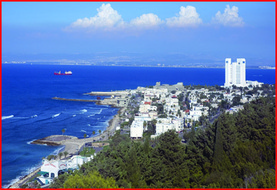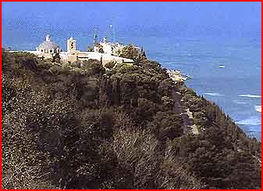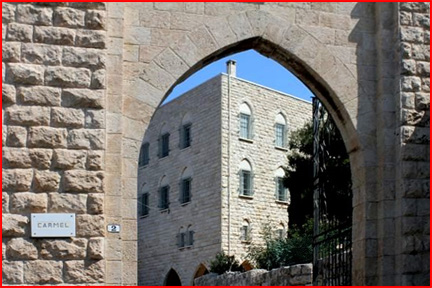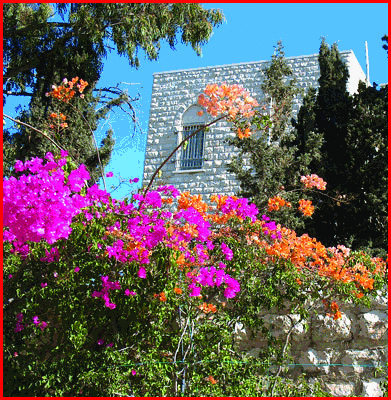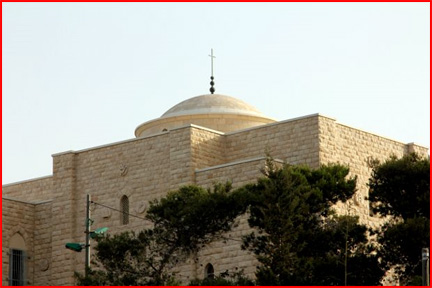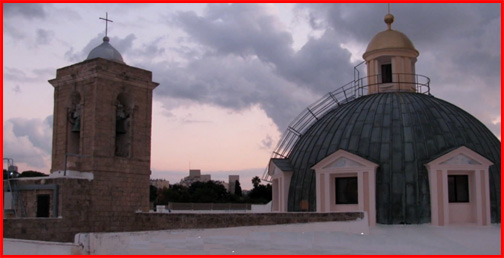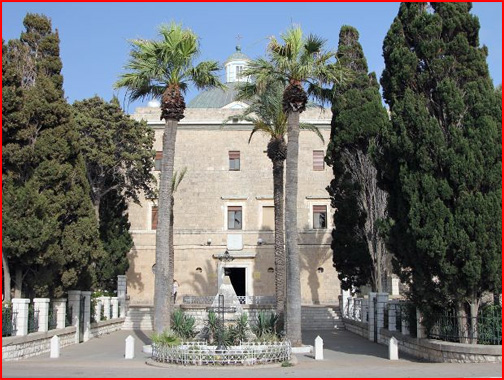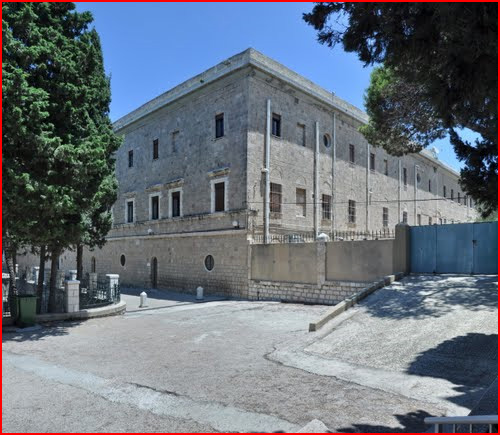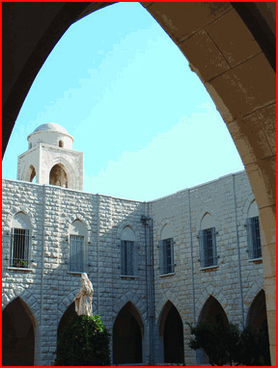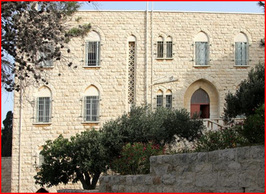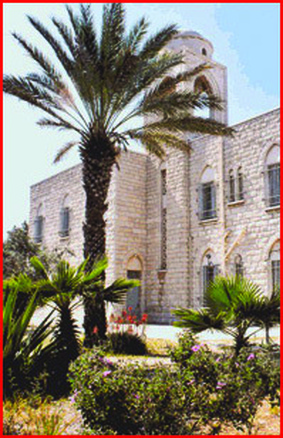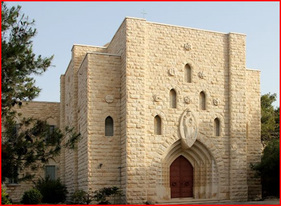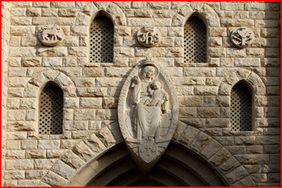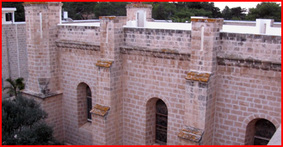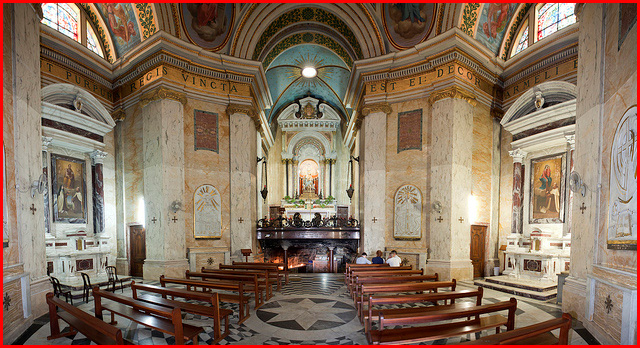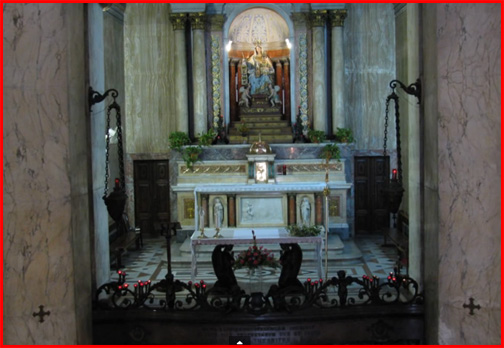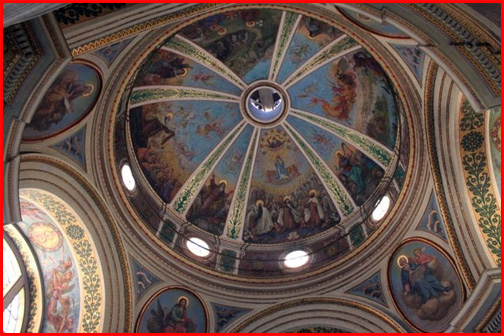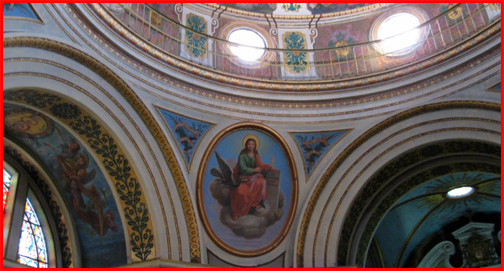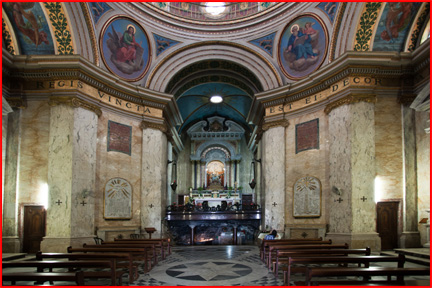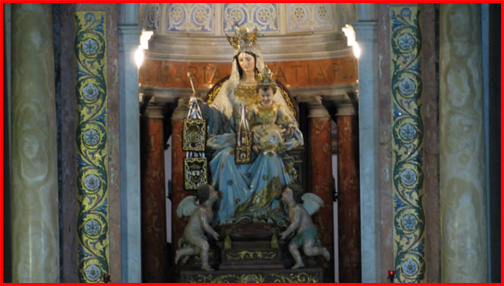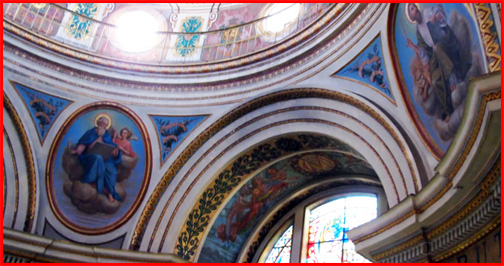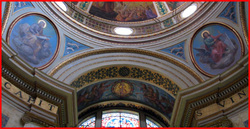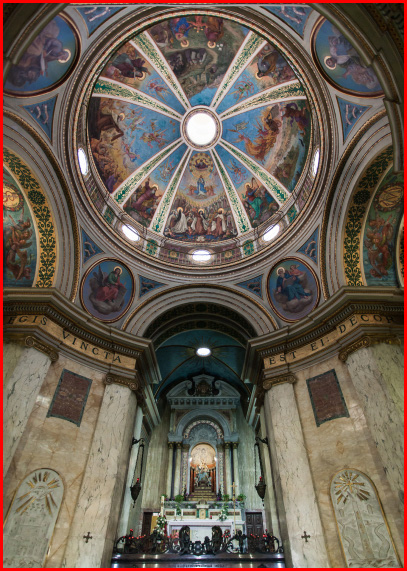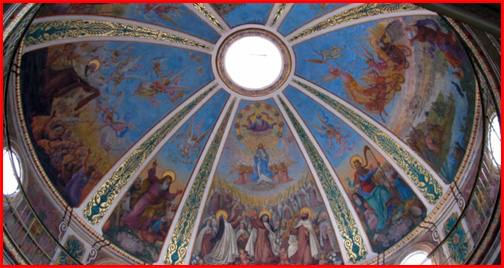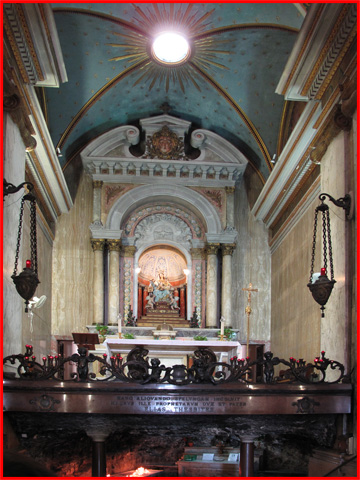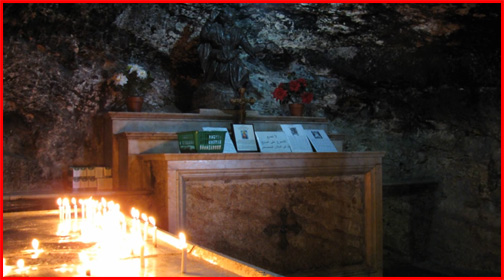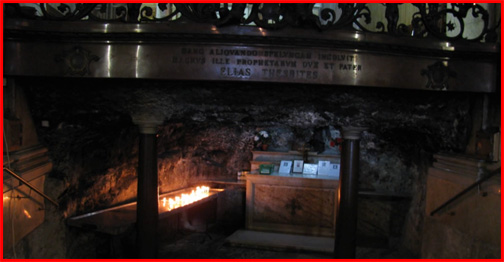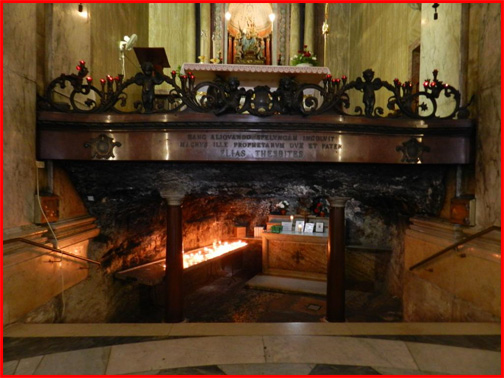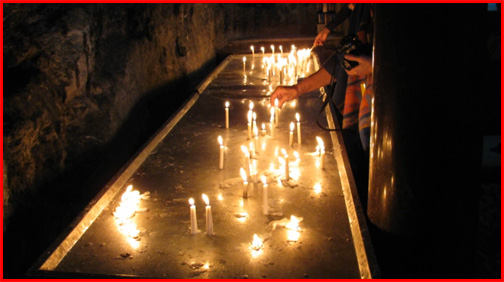| Devotion to Our Lady |
|
- Homepage
-
Daily Thoughts
- 2023 October Daily Thoughts
- Daily Thoughts Lent 2020
- Daily Thoughts for Advent 2019
- Daily Thoughts for October 2019
- Daily Thoughts for September 2019
- Daily Thoughts for August 2019
- Daily Thoughts for July
- Daily Thoughts for June
- Daily Thoughts for Easter 2019
- Daily Thoughts for Lent 2019
- Daily Thoughts for Christmas
- Daily Thoughts Easter 2022
- Sacred Heart
- Consecration
-
Spiritual Life
- Holy Mass Explained
- First Friday Devotions
- First Saturday Devotions
- The Mercy of God
- Vocations
- The Path Everyone Must Walk >
- Gift of Failure
- Halloween or Hell-O-Ween?
- Ignatian Spiritual Exercises >
- Meditation is Soul-Saving
- Spiritual Communion
- Miraculous Medal
- Enrollment in Miraculous Medal
- St. Benedict Medal
- Holy Water
- Advice on Prayer
- Your Daily Mary
-
Prayers
- September Devotions
- Seven Sorrows of Our Lady
-
Novenas
>
- NV-Help of Christians
- NV-Nativity of Our Lady
- NV-Seven Sorrows
- NV- Sorrowful Heart
- NV-Pope St Pius X
- NV-La Salette
- NV-St Michael Archangel
- NV-Immaculate Heart
- NV-Assumption
- NV-Novena for Fathers
- NV-Novena for Your Mother
- NV-St Raphael Archangel
- NV-Souls in Purgatory
- NV-All Saints Day
- NV-Christ the King
- NV-Divine Motherhood
- NV-Guardian Angels
- NV-Rosary
- NV-Mirac Med
- NV- Imm Conc
- NV - Guadalupe
- NV - Nativity of Jesus
- NV-Epiphany
- NV-OL Good Success
- NV-Lourdes
- NV-St Patrick
- NV-St Joseph
- NV-Annunciation
- NV-St Louis de Montfort
- NV-OL Good Counsel
- NV-Last Supper
- NV-Passion
- NV-Pentecost
- NV-Ascension
- NV-Sacred Heart
- NV-Sacred Heart & Perpetual Help
- NV-Corpus Christi
- NV-OL of Perpetual Help
- NV-Queenship BVM
- NV-OL of Mount Carmel
- NV-St Mary Magdalen
- NV- Im Hrt
- August Devotions to IHM
- Immaculate Heart of Mary
- Litany of Dependence
- Prayers to St Mary Magdalen
- Prayers in Times of Sickness Disease & Danger
- Holy Souls in Purgatory
- Meditations on the Litany of Our Lady
- Special Feast Days
- Prayers to Mary (Mon-Sun)
- Litanies to Our Lady >
- Various & Special Needs
- Our Lady of the Rosary
- Our Lady of Mt. Carmel
- Our Lady of Perpetual Help
- Our Lady of Guadalupe
- Other titles of Our Lady
-
Rosary
- Downloads
- Easter Season
-
Holy Week
- Last Seven Words of Jesus >
- Characters of Passion >
- The Last Days of Christ
- Before Palm Sunday
- Palm Sunday
- Monday in Holy Week
- Tuesday in Holy Week
- Wednesday in Holy Week
- Holy Thursday (Last Supper)
- Holy Thursday (Agony & Arrest)
- Night Vigil with Christ
- Good Friday (Pilate & Herod)
- Good Friday (Way of Cross & Crucifixion)
- Saturday in Holy Week
-
Lent
- Ideas for Lent
- Daily Lenten Planner
- Daily Lenten Liturgy
- From Cold to Hot
- Lent with Aquinas
- Lent with Dom Gueranger
- Virtues for Lent
- History of Penance
- How Expensive is Sin?
- Confession of Sins
- Letter to Friends of the Cross
- Sermons for Lent
- Stations of the Cross >
- Lenten Prayers
- 7 Penitential Psalms
- Lenten Psalms SUN
- Lenten Psalms MON
- Lenten Psalms TUE
- Lenten Psalms WED
- Lenten Psalms THU
- Lenten Psalms FRI
- Lenten Psalms SAT
- Lenten Laughs
- Septuagesima
-
Christmas
- Epiphany Explained
- Suggestions for Christmas
- Food For Thought
- Christmas with Aquinas
- Christmas with Dom Gueranger
- Christmas Prayers
- Candles & Candlemas
- Christmas Sermons
- Christmas Prayers SUN
- Christmas Prayers MON
- Christmas Prayers TUE
- Christmas Prayers WED
- Christmas Prayers THU
- Christmas Prayers FRI
- Christmas Prayers SAT
- Twelve Days of Christmas >
-
Advent Journey
- Purgatory
- Christ the King
- Legion of Mary
- Scapular
-
Saints
-
Martyrs for the Faith
>
- Your Daily Martyr >
- All 365 Days of Martyrs
- Cristeros
- St Valentine & Valentine's Day
- Martyrs--Thomas Becket
- Martyrs--John the Apostle
- Holy Machabees
- Age of Martyrdom
- Carmelites of Compiegne
- Martyrs--Peter & Paul
- Martyrs--John the Baptist
- Martyrs--Andrew
- Martyrs--James the Great
- Martyrs--North American
- Martyrs--Seven Holy Sleepers
- Martyrs--Afra
- School of Martyrdom
- Martyrs--Christina
- Desert Saints >
- Saints for Sinners >
- Saints of Mary >
- History of All Saints Day
-
Martyrs for the Faith
>
- Precious Blood
- Holy Ghost
- Synod 2023
-
Catechism
- Catechism Lesson 1
- Catechism Lesson 2
- Catechism Lesson 3
- Catechism Lesson 4
- Catechism Lesson 5
- Catechism Lesson 6
- Catechism Lesson 7
- Catechism Lesson 8
- Catechism Lesson 9
- Catechism Lesson 10
- Catechism Lesson 11
- Catechism Lesson 12
- Catechism Lesson 13
- Catechism Lesson 14
- Catechism Lesson 15
- Catechism Lesson 16
- Catechism Lesson 17
- Catechism Lesson 18
- Catechism Lesson 19
- Catechism Lesson 20
- Catechism Lesson 21
- Catechism Lesson 22
- Bible Study
-
Calendar
- Miracles
- Apparitions
- Shrines
- Prophecies
- Angels Homepage
- Hell
-
Church Crisis
- Conspiracy Theories
- Amazon Synod 2019 >
- Liberalism & Modernism
- Modernism--Encyclical Pascendi
- Modernism & Children
- Modernism--Documents
- The Francis Pages
- Church Enemies on Francis
- Francis Quotes
- Amoris Laetitia Critique
- Danger of Ignorance (Pius X)
- Restore all In Christ (Pius X)
- Catholic Action (Pius X)
- Another TITANIC Disaster?
- The "Errors of Russia"
- CRISIS PRAYERS
- Election Novena 2024
- The Anger Room
- War Zone
- Life of Mary
- Spiritual Gym
- Stupidity
- Coronavirus and Catholicism
- History & Facts
- Books
- Catholic Family
- Children
- Daily Quiz
-
Novena Church & Pope
- Day 01 Church-Pope Novena
- Day 02 Church-Pope Novena
- Day 03 Church-Pope Novena
- Day 04 Church-Pope Novena
- Day 05 Church-Pope Novena
- Day 06 Church-Pope Novena
- Day 07 Church-Pope Novena
- Day 08 Church-Pope Novena
- Day 09 Church-Pope Novena
- Day 10 Church-Pope Novena
- Day 11 Church-Pope Novena
- Day 12 Church-Pope Novena
- Day 13 Church-Pope Novena
- Day 14 Church-Pope Novena
- Day 15 Church-Pope Novena
- Day 16 Church-Pope Novena
- Day 17 Church-Pope Novena
- Day 18 Church-Pope Novena
- Day 19 Church-Pope Novena
- Day 20 Church-Pope Novena
- Day 21 Church-Pope Novena
- Day 22 Church-Pope Novena
- Day 23 Church-Pope Novena
- Day 24 Church-Pope Novena
- Day 25 Church-Pope Novena
- Day 26 Church-Pope Novena
- Day 27 Church-Pope Novena
- Day 28 Church-Pope Novena
- Day 29 Church-Pope Novena
- Day 30 Church-Pope Novena
- Day 31 Church-Pope Novena
- Day 32 Church-Pope Novena
- Day 33 Church-Pope Novena
- Day 34 Church-Pope Novena
- Day 35 Church-Pope Novena
- Day 36 Church-Pope Novena
- Day 37 Church-Pope Novena
- Day 38 Church-Pope Novena
- Day 39 Church-Pope Novena
- Day 40 Church-Pope Novena
- Day 41 Church-Pope Novena
- Day 42 Church-Pope Novena
- Day 43 Church-Pope Novena
- Day 44 Church-Pope Novena
- Day 45 Church-Pope Novena
- Day 46 Church-Pope Novena
- Day 47 Church-Pope Novena
- Day 48 Church-Pope Novena
- Day 49 Church-Pope Novena
- Day 50 Church-Pope Novena
- Day 51 Church-Pope Novena
- Day 52 Church-Pope Novena
- Day 53 Church-Pope Novena
- Day 54 Church-Pope Novena
- Penance Novena
- Daily WeAtheR Forecast
CLICK ON THE PAGE YOU WISH TO VIEW
| The Brown Scapular by Fr. Killian Lynch O. Carm., former Superior General |
| Mary’s Keepsake ― The Scapular, by Peter O’Dwyer, O.Carm. |
| Brown Scapular Blessing & Enrollment Prayers | Brown Scapular Frequently Asked Questions |
| Prayers to Our Lady of Mount Carmel | Novena to Our Lady of Mount Carmel |
| Brown Scapular Miracles | Shrine of Mount Carmel |
| The Brown Scapular by Fr. Killian Lynch O. Carm., former Superior General |
| Mary’s Keepsake ― The Scapular, by Peter O’Dwyer, O.Carm. |
| Brown Scapular Blessing & Enrollment Prayers | Brown Scapular Frequently Asked Questions |
| Prayers to Our Lady of Mount Carmel | Novena to Our Lady of Mount Carmel |
| Brown Scapular Miracles | Shrine of Mount Carmel |
TO VISIT A SHRINE
click on the shrine you would like to view
| Bethlehem | Nazareth | Lanciano | Lourdes | La Salette | Fatima | Guadalupe | Walsingham | Mount Carmel |
| Our Lady of Perpetual Help | St. Patrick's Purgatory |
click on the shrine you would like to view
| Bethlehem | Nazareth | Lanciano | Lourdes | La Salette | Fatima | Guadalupe | Walsingham | Mount Carmel |
| Our Lady of Perpetual Help | St. Patrick's Purgatory |
|
BRIEF HISTORY
Beautiful Garden
Mount Carmel is on the north-western coast of the Holy Land. The Hebrew word for Carmel means "Beautiful Garden". Truly that is what Our Lady is, the beautiful and fruitful garden, that brought forth the fruit of her womb, Jesus Christ, our God and Savior. Holy Mountain The origin of Mount Carmel's sacredness goes back to about 860 BC, to the time of the prophet Elias and his victory over the pagan prophets and their god, Baal. The account of this event is given in 3 Kings 18:19-40. The Israelites had taken to worshiping false gods, especially the god Baal. Their evil King Achab had married the Gentile, Jezabel, who worshiped Baal. The king built a temple to this pagan deity. When the prophets of the true God denounced him for this, he had them killed. Elias stood firm and, through his prayers, he managed to bring about a drought in Israel that lasted over three years. The Duel on Mount Carmel In the meantime, Elias challenged the prophets of Baal to gather on Mount Carmel to determine which God, Baal or the Lord was the true God. Each built a stone altar with firewood and had a sacrificial bull placed upon it. The "God" who would send fire from Heaven, upon the altar, would be accepted as the true God. The prophets of Baal prayed and danced and chanted all day to no avail. Elias, though before beginning his prayer, poured gallons of water over his sacrifice, making it humanly impossible to light the fire. Elias then called upon the Lord and immediately a bolt of lightning came down from Heaven, setting the altar on fire and consuming the sacrifice and the stones of the altar. The pagan prophets were killed at Elias' command, and Elias, fearing the revenge of Jezabel for his having killed her prophets, went into hiding on Mount Carmel. Later a community of prophets joined him. They dwelt in caves, praying to God, and living lives of hermits. Our Lady Saw Mount Carmel Daily At the base of this holy mountain; about nine-miles to the east, was the little village of Nazareth, where Our Lady lived and where the Incarnation took place. The Blessed Virgin Mary, there in the shadow of Mount Carmel, uttered her sublime “fiat” thus enabling the second Person of the Blessed Trinity to become Man for our salvation. Tradition has it that, to the wondrous delight of the hermits, Our Lady, with St. Joseph and the Child Jesus, visited Mount Carmel upon returning from their years of exile in Egypt. As a result of this visit, the contemplatives of Carmel professed their unqualified belief in Jesus as the long awaited Messias, the Savior of the World. Tradition assures us that, because of their childlike faith, the Carmelites were among the first to be baptized by the Apostles after Pentecost. Brothers of Our Lady of Mount Carmel Likewise, their great love for the Mother of God led them to build, on Mount Carmel, the first church honoring Our Lady. Moreover, as a reward for their devotion to Mary, the Carmelites were the first to be entrusted with the guardianship of the Holy House of Nazareth, following Our Lady’s death and Assumption into Heaven. So great was their love for Our Blessed Mother that the Carmelites were known as the "Brothers of Our Lady of Mount Carmel". Carmel in the Middle Ages Now let us fast-forward to the 12th and 13th centuries, when the Carmelites were hermits living on Mount Carmel in the Holy Land. They believed themselves to be the spiritual sons of Elias. They led a life of contemplation, modeled after the prophet. Driven Out By Persecution Many of the holy Carmelites were forced to leave the Holy Land because of the Saracen invasion. King St. Louis IX of France brought them to Europe. As they were sailing away from the shore of the Holy Land, they sang the Salva Regina. Our Lady appeared to them and promised to be their Star of the Sea. Along the way some stayed in Cyprus, others in Naples. Another group went to France to live. A few went on to England. Lord Richard de Grey gave them a property in Alyesford in Kent. St. Simon Stock, Vicar General of the Carmelite Order It was in England that Simon Stock joined the group, and he was later to be elected their first Vicar General. Many problems plagued the new order. The people made fun of the “striped bedouin mantle” – they looked like bees, but perhaps they really were busy-bees, busy with the work of the 'Queen Bee'! Others felt there were enough religious orders already. To make matters worse there was internal strife and bickering between the older and younger monks. By 1251, St. Simon realized that Our Lady was his only hope. With tears in eyes, he saluted her as the Flower of Carmel and the Star of the Sea. He prayed fervently for her "privilegium" which was the special protection a lord gave to his vassals. The lord would protect the vassal’s life and property, in return for the loyalty and service of the one making the request. Livelihood in the Middle Ages In the 13th century there was no commerce or industry. Land was the only means of a livelihood. The vassals paid homage to the lord of the land. The lords owned the land and by this act of homage the vassal was given the right to till the land and had to give part of what he grew to the lord. The vassla was thereby guaranteed the protection of the lord. The Yoke of the Lord The scapular was not something new to medieval Europe. It had been around since around 550, when the monastic orders came about. The two pieces of cloth joined at the shoulders and hanging down the back and breast had deep spiritual meaning. Our Lord said in the Gospels, “My yoke is sweet and my burden is light.” The monks by putting on this garment realized that the sweet burden of Divine service was upon him and the whole day was dedicated to God. Faith and actual living were one in the Middle Ages. The monk presented himself to God, His Divine Master, just as a vassal presented himself to his lord “to pay homage.” So too, did the friar make his vows to God. So the idea of the scapular and the giving of yourself to another for protection was not a novel idea. Our Lady chose that which was traditional and widely practiced. Our Lady Appears to St. Simon Stock While he was praying to her, Our Lady appeared to St. Simon Stock, giving him the Brown Scapular and making this promise: "Take this Scapular, it shall be a sign of salvation, a protection in danger and a pledge of peace. Whosoever dies wearing this scapular shall not suffer eternal fire." Skeptics Begone! There are those today who say this apparition doesn't have the documentation to prove its validity. John Haffert in his book, Mary in Her Scapular Promise, states that the documents were originally stored in the Carmelite libraries at Bordeaux and at London. A hundred years after the Vision, the library at Bordeaux was burned by the city officials to prevent the spread of the Black Plague. During the Anglican schism, when England separated from the Catholic Church, King Henry VIII ordered the London library burned to the ground. But there is one document that is authentic. In 1389, the General of the Carmelite Order, John Grossi, wrote the book known as "The Viridarium". It is a catalogue of the Carmelite Saints and gives an accurate account of the Vision. John Grossi consulted and talked to companions of St. Simon. He had access to all the libraries in the Order. He explicitly declared that he wrote nothing in his Viridarium that was not from the ancient documents. Miraculous Change After Our Lady appeared to St. Simon, almost immediately a miraculous change took place in the Order. The order was saved, its Marian character confirmed and Mary became more a Mother than a Queen to it. In the beginning only the Carmelites wore the scapular. But by the 14th century the privilege of wearing the scapular extended outside the order. Lay groups and third orders were formed. Some of these groups were called confraternities. Until the End of the World Still Our Lady continued to favor the Carmelite Order and her scapular with further blessings and promises. In 1321, St. Peter Thomas was told by Our Heavenly Mother that “the Order of Carmel is destined to exist until the end of the world.” |
BELOW: A large map showing the chief landmarks and places of interest in the Holy Land. As you can see, at the top left corner of the map, Mount Carmel is more like a long ridge running from the north-west to the south-east, approximately 20 miles long. Our Lady would have clearly seen the mountain each day, from her home in Nazareth, which was only about 9 miles away from the foothills of the mountain.
BELOW: Here is a slightly enlarged version of the above map, showing more local towns. Notice the proximity of Mount Tabor, where Our Lord would show Himself transfigured to the three Apostles, Peter, James and John.
BELOW LEFT: An aerial view of Mount Carmel looking west from the east. You can see that it is somewhat of a rugged plateau.
BELOW RIGHT: An aerial photo of present day Mount Carmel, with the city of Haifa to the right (3rd largest city in Israel). Today the area is a very densely populated region, even on top of the mountain. BELOW: A panorama of the whole Mount Carmel range, which is over 20 miles of elevation. The left side of the photo shows the south-western foothills that lead up to the plateau-like elevation of Mount Carmel as it runs to the north-west (right side of photo).
BELOW: The north-western point of Mount Carmel, where it meets and overlooks the Mediterranean Sea. In the foreground are the outskirts of Haifa, today the 3rd largest city in Israel.
BELOW: More views of Mount Carmel from a distance. These would be similar to the views Our Lady would have seen from Nazareth, nine-miles away.
|
MOUNT CARMEL — A MOUNTAIN OF INFORMATION!
|
The mountain that's green all year round Mount Carmel, with its wild cliffs and green landscapes became a symbol of beauty for good reason. Its special characteristics also made it a part of religious tradition. It was here that Elias performed one of his best-known miracles — bringing down fire from Heaven. The mountain features forest and woodland species of trees, as well as shrubs, numerous flowers and a variety of wildlife, along with wonderful panoramas and archaeological sites. The park covers 21,000 acres, one third of which are nature reserves. The national park is entirely dedicated to the protection of Mediterranean nature and landscape.
Mount Carmel is a coastal mountain range in northern Israel stretching from the Mediterranean Sea towards the southeast. A number of towns are located there, most notably the city of Haifa, Israel’s third largest city, located on the northern slope. The phrase Mount Carmel has been used in three distinct ways: (1) To refer to the 24-mile long mountain range, stretching as far in the southeast as Jenin. (2) To refer to the northwestern 12 miles of the mountain range. (3) To refer to the headland at the northwestern end of the range, which is where the Elias’ Cave and the Carmelite monastery are found. The Carmel range is approximately 4 to 5 miles wide, sloping gradually towards the southwest, but forming a steep ridge on the northeastern face, 1,791 feet high. The Jezreel Valley lies to the immediate northeast. The range forms a natural barrier in the landscape, just as the Jezreel Valley forms a natural passageway, and consequently the mountain range and the valley have had a large impact on migration and invasions through the Levant over time. The mountain formation is an admixture of limestone and flint, containing many caves, and covered in several volcanic rocks. The sloped side of the mountain is covered with luxuriant vegetation, including oak, pine, olive, and laurel trees. Several modern towns are located on the range, including Yokneam on the eastern ridge, Zikhron Ya’akov on the southern slope, the Druze communities of Daliyat al-Karmel and Isfiya on the more central part of the ridge, and the towns of Nesher, Tirat Hakarmel, and the city of Haifa, on the far northwestern promontory and its base. There is also a small kibbutz called Beit Oren, which is located on one of the highest points in the range to the southeast of Haifa. |
The highest point of Mount Carmel is 1,724 ft. Its length is 24 miles and its width 5 miles.It is sometimes considered as a family of mountains rather than one single mountain.The Carmel Range, often referred to simply as "Mount Carmel" (though this more properly refers to the hills immediately above Haifa, is a compact region of hills in Israel extending south-westwards from the Central Hill country to the Mediterranean Sea. Dividing the Coastal Plain from the Jezreel Valley or Great Plain of Esdras as it was anciently called, the Carmel Range retains its own unique landscape and culture.
The maps shown on this page, manifest its long, ridge-like appearance, while the photos to the right show its plateau-like appearance when looking from a distance. The most northerly point is where the mountain meets the Mediterranean Sea, and where the city of Haifa is located. The southernmost post sits across the valley from Mount Gilboa and this place forms the gateway to the Great Plain that runs north-west to the Mediterranean Sea and Haifa. Haifa, is a city founded 1,800 years ago by Jews and non-Jews. The name Haifa comes from the Hebrew "Chof Yaffeh," or, beautiful shore. The most common type of rock found on Mount Carmel is limestone and flint One being porous and therefore account for the many caves that nature and God's Providence have carved-out within the face of the mountain. The other being harder and readily transformed into tools needed for survival. The Jezreel Valley is in the Galilee region of northern Israel. It is an extensive inland valley, largely rural, extending inland from the Carmel Range, west of Haifa, leading south-west to the Jordan River valley. As the only place where the Holy Land could be crossed without climbing mountains, the Jezreel Valley was home to important trade routes and thus, was the site of many important battles between Middle Eastern powers. Nazareth was located in the foothills of the Jezreel Valley, and from there both famous mountains could be easily seen: Carmel to the east and Tabor to the west. In Biblical times many wars were fought in the Jezreel Valley between the Israelites and their neighbors, particularly the Philistines. |
BELOW: Here you see some of the beautiful views that form part of the Mount Carmel range of hills. The plateau like sections of the Carmel Range, even have their own beautiful valleys at the top of the 24 mile long stretch of mountain.
VIEWS FROM THE TOP OF MOUNT CARMEL
MOUNT CARMEL — THE MOUNT OF CAVES AND PROPHETS
|
The Caves of Carmel
|
A Mountain of Limestone and Flint, Lush Vegetation and Caves
A well-known mountain ridge in Palestine, usually called in the Hebrew Bible Hakkarmel (with the definite article), “the garden” or “the garden-land.” In later Hebrew it is known simply as Karmel, and in modern Arabic as Kurmul, or more commonly as Jebel Mâr Elias (Mountain of St. Elias). At its extremity, near the sea, Mount Carmel looks like a bold promontory which all but runs into the waves of the Mediterranean. This northwestern end of Carmel is about nine miles southwest of Acre.. From this point, the ridge gradually retires from the coast and stretches southeast, ascending for about ten miles to its highest point (over 1,700 feet) and then sinking for nearly three miles more. Like its northern, its southern end is marked by a bold bluff above Wady el-Milh. This is the range of mountains which is usually designated under the name of Mount Carmel. The name is also applied at times to the lower hills which, for another twelve or thirteen miles, form the prolongation of the main range and extend to the southeast as far as the neighbourhood of Jenin. These lower hills, however, are of a softer formation than the main range of Carmel
It is made up of the same hard limestone. In it there are numerous caves, and it abounds in flints, geodes, and fossils. On the northeast, igneous rocks break out from a basalt formation which runs through the plain of Esdrelon and extends to the Sea of Galilee. As nearly the whole range of Carmel is covered with abundant and rich vegetable earth, it has still much of that appearance which no doubt was the origin of its name: “the garden” or “the garden land.” Most of the ridge is covered with thickets of evergreens. Besides the pine, its most common trees are the prickly oak, myrtle, lentisk, carob and olive. Carmel is also remarkable for its profusion of aromatic plants and wild flowers. Its woody heights are tenanted chiefly by the roebuck, leopard, and wild cat. In various places of the range, ancient wine presses can still be pointed out. Its woody summits and its tortuous caverns formed a secure hiding place for a fugitive [Amos 9:3).Elias would use its caves and caverns as a refuge from Jezabel's murderous agents, for she would have been happy to see Elias dead and buried. A Sacred Mountain The sacredness of its heights was well known in ancient Israel. Apparently long before Elias’ time — how long before cannot now be made out — an altar had been erected in honor of Yahweh on Mt. Carmel, and its ruins were repaired by that prophet as soon as this could be done with safety (3 Kings 18:30). It was the ridge of Carmel that the same Prophet Elias chose for the assembly of the people, such assemblies being usually held at some holy place (3 Kings 18:19 sq.). Again, in 4 Kings 4:23, there is a manifest allusion to the custom or resorting to Carmel for the celebration of the new moon and of the sabbath. From various passages of Holy Writ it has been inferred that this sacred mountain was the actual place of residence of both Elias and Eliseus (Cf. 4 Kings 2:25; 4:25-27, etc.); and, as a matter of fact, Elias grotto and the cavern known as the School of the Prophets are still pointed out. THE PROPHET ELIAS (ELIJAH) Elias was the loftiest and most wonderful prophet of the Old Testament. His apostolate most likely took place in Northern Israel. Every part of the prophet’s life bears out the description of the writer of Ecclesiasticus: He was “as a fire, and his word burnt like a torch” (48:1). The times called for such a prophet. Under the shamful influence of his Tyrian wife Jezabel, King Achab, though perhaps not intending to totally abandon Yahveh’s worship, had nevertheless erected in Samaria a temple to the Tyrian god Baal (3 Kings 16:32) and introduced a multitude of foreign priests; and had, no doubt, occasionally offered sacrifices to the pagan god, as well as allowing a bloody persecution of the prophets of Yahveh. Elias the Cave Prophet Of Elias’s origin nothing is known, except that he was a Thesbite. Some Jewish legends, echoed in a few Christian writings, say Elias was of priestly descent; but there is no other evidence for the statement other than the fact that he offered sacrifices. His whole manner of life resembles somewhat that of the Nazarites and is a loud protest against his corrupt age. His skin garment and leather girdle (4 Kings, 1:8), his swift foot (3 Kings 18:46), his habit of dwelling in the clefts of the torrents (3 Kings 17:3) or in the caves of the mountains (3 Kings 19:9), of sleeping under a scanty shelter (3 Kings 19:5), betray the true son of the desert. The caves of Mount Carmel were well known to Elias the Old Testament prophet. Here he sometimes lived — and sometimes had to hide. On the northern slope of Mount Carmel, near the Haifa beach, is a cave where the prophet is believed to have meditated before his fateful encounter with the priests of Baal. Elias’ Cave can be approached by stairs from Allenby Road, near Haifa’s cable car. It is also accessible down a steep path from the Carmelite church on Stella Maris Road. The cave, about 45 feet long, is situated in a residential dwelling—since the city of Haifa has overgrown into Mount Carmel and its slopes. It is open to the public, with separate areas for males and females. Adjacent buildings served as a hostel from the late 19th century. It is an ancient site of worship, but for many centuries it was devoted to Baal. The tradition that associates it with Elias dates to the 3rd century AD. Although we cannot find this in the Bible text, it is said that Elias stayed here before the battle with the Baal priests. Though to some it seems rather far away, because it is 12 miles as the crow flies in very rocky terrain; we must not forget on the other hand, that Elias was a strong and hardy man, who walked enormous distances in his life. Another tradition says that Elias established his religious school in this cave, where he taught Eliseus, among others. The walls manifest Jewish and Christian graffiti dating from the 5th and 6th centuries. There is another cave associated with Elias further up the hill behind the lighthouse. It is possible to reach it by car, and turning right into Stella Maris Road; or on foot, following a steep climb through a luscious park with a spectacular sea view. The second cave belongs to the monastery of Stella Maris, owned by a religious order that was established in the 12th century by French Crusaders. There is likewise some reason to believe that the incident, told of Elias in 4 Kings 1:9-15, took place on the mountain of Carmel. In this passage our English translation speaks indeed of the prophet as sitting down on “a hill”, when he caused fire to come down from heaven on the two “fifties” and their respective captains who had been sent by King Ochozias to put him under arrest. But the rendering of the original Hebrew by “a hill”, which would naturally suggest a place different from the mountain range of Carmel, is very probably a poor translation. The Hebrew expression means “the mountain” with an implicit reference to Mount Carmel, since that expression, in connection with Elias, is used for that range only, with the exception of Sinai, which, of course, is not intended in 4 Kings 1:19-15. However this may be, there is another incident in Elias’ life which Holy Scripyure clearly places on the ridge of Carmel, and on account of which that mountain has been, and will ever be, particularly renowned. The event is narrated in detail in 3 Kings chapter 18. It was that of a public contest between Elias, the great champion of worship to the one and true God, Yahweh; and the prophets of Baal, the Phoenician false god, whose cult had lately been fully organized by the wicked Achab in the new capital of the Northern Kingdom. For two years a severe drought, foretold by Elias, had prevailed in Israel. Yet it had not sufficed to convince the people that Yahweh, not Baal, was indeed the true God. In the third year, when the drought was about to be broken, Elias, according to the Lord’s command, met King Achab, and obtained from him that all the people be gathered together with the prophets of Baal unto Mount Carmel. There, in the presence of all, he, the only surviving prophet of the Lord, proposed that the God who would consume by fire a bullock laid upon wood and with no fire under it be alone recognized as God. The challenge was accepted. In vain did the four hundred and fifty prophets of Baal call upon their sun-god till noon, nay even till the time of the evening sacrifice. It was now the turn of Elias. Having repaired an ancient altar of Yahweh by means of twelve stones, the prophet disposed the wood, laid a bullock upon it, and got filled with water the trench which he had dug around the whole. His prayer to Yahweh was heard. The fire from heaven consumed all, to the very water in the trench, and all the people seeing this worshiped, saying: “Yahweh is God. Yahweh is God.” Then followed in rapid succession, the slaying of all the prophets of Baal who had been brought down to the brook Cison; Elias’ prayer on the top of Carmel for rain and his repeated bidding to his servant: “Go up and look toward the sea”; the arising of a cloud, the forerunner of a violent storm; the king’s prompt departure for Jezrahel, lest he should be stopped by the rain; and lastly, Elias’ swift running before Achab to the entrance of Jezrahel. The scene marked out alike by tradition and by natural features as the place of this glorious victory of Yahweh and Elias over Baal and his prophets is the south-eastern extremity of Mt. Carmel, the part of the mountain nearest to, and most accessible from Jezrahel. The place now known as El Marahka, “the burning” or “the sacrifice”, is very probably the spot on which stood the altar of Yahweh which Elias repaired. It is marked by shapeless ruins which is where Druses of neighboring villages come to perform a yearly sacrifice. Its position, at the south-eastern point of the ridge, easily allowed the altars thereon erected to be seen by Achab and the priests of Baal and the multitude who stood on a wide upland sweep close beneath it. Not far from it there is a well always supplied with water even in the driest seasons, from which Elias could draw the water with which he could fill the trench around his altar. On the lower declivities of the mountains is a mound called Tell El Kassis, which means “the hill of the priest”, or “of the priests”, which may mark the place where the prophets of Baal were put to death. The brook Cison, which runs at the foot of Carmel, was no doubt absolutely dry after the two years’ drought, so that the multitude could easily go across its bed to witness Yahweh’s victory on Mt. Carmel, and King Achab hasten across it to Jezrahel, before the threatening storm should fill it with water and render it impassable. The corpses of the slain prophets of Baal were hurled down into the Cison, and when the brook was later changed by the storm, into an impetuous torrent, they were carried swiftly to the Mediterranean Sea. From the slaughter by the side of the river, the prophet of the Lord “went up” again to El Marahka (on Mount Carmel), and there prayed fervently for the breaking of the drought. There, too, he naturally bade his servant to “go up and look toward the sea” for while from the place where he prayed the view of the Mediterranean is intercepted by an adjacent height, the height itself may be ascended in a few minutes and a full view of the sea be obtained from the top. Finally, both Achab and Elias having rushed down to the plain, safely crossed the Cison before the rain could interfere with them, because at this point the river is very close to Mount Carmel. However, this victory was short and sweet. Jezabel was after his blood for killing her prophets and priests. Elias fled to Mount Horeb. After learning, on Mount Horeb, that Eliseus, the son of Saphat, had been selected by God as his successor in the prophetic office, Elias set out to make known the Divine will. This he did by casting his mantle over the shoulders of Eliseus,as he was taken up into Heaven in a fiery chariot. This was symbolic of the Brown Scapular of Our Lady of Mount Carmel, that the Church casts upon our shoulders so that we might acquire the spirit of Our Lady. THE PROPHET ELISEUS (ELISHA) Eliseus went to Mount Carmel after Elias was taken to Heaven in a fiery chariot. Before he settled in Samaria, the Prophet passed some time on Mount Carmel, living in the wild and in the caves. "Eliseus went up from to Bethel: and as he was going up by the way, little boys came out of the city and mocked him, saying: 'Go up, thou bald head; go up, thou bald head!' And looking back, he saw them, and cursed them in the Name of the Lord: and there came forth two bears out of the forest, and tore of them two and forty boys. And from thence he went to Mount Carmel" (4 Kings 2:23-25). |
ELIAS' CAVE IN HAIFA
|
Near the bottom of northern slope of Mount Carmel, near the Haifa beach, is a cave where the prophet is believed to have meditated before his fateful encounter with the priests of Baal. Elias’ Cave can be approached by stairs from Allenby Road, near Haifa’s cable car. It is also accessible down a steep path from the Carmelite church on Stella Maris Road. This is obviously not the only cave which Elias frequented, but this one has an age old tradition recommending it.
|
The cave, about 45 feet long, is situated in a residential dwelling. It is open to the public, with separate areas for males and females. Adjacent buildings served as a hostel from the late 19th century. It is an ancient site of worship, but for many centuries it was devoted to Baal. The tradition that associates it with Elias dates to the 3rd century AD. Although we cannot find this in the Bible text, it is said that Elias stayed here before the battle with the Baal priests.
|
|
Before there were temples, religious rites were conducted in caves. In Sikkim, the gods and earth spirits were established in the Four Great Caves, oriented to the cardinal points. The Hindu Mother of Caverns was one of the oldest emanations of Kali, a matrikadevi (Mother Goddess) named Kurukulla. Her Phrygian descendant Cybele, the Great Mother of the gods who was brought to Rome in the second century BC, was called “Cavern-dweller” and was worshiped in natural or artificial caves. Her sacred subterranean chambers were the womb-shrines.
The Sanskrit word for a temple meant “womb.” The Sumerian word for the Underworld, the sacred cave, and the womb was matu, from the universal root word for “mother.” To the Pygmies of Africa, the same word meant the great cavern that stood for the “Mother of God.” To Simon Magus, Paradise was defined as “the Mother’s Womb.” |
MODERN DAY CAVE HOUSES
Too Plush For Elias!
Too Plush For Elias!
|
Tens of million in China have gone underground — to live. Over 30 million Chinese make their homes in caves, according to a recent report by the Los Angeles Times. Many live in Shaanxi province, where the region’s porous soil is particularly well-suited for easy digging. The caves, called yaodong in Chinese, are usually dug into the side of a mountain. Often rice paper or blankets hang from semicircular entrances to serve as makeshift doors.
Swankier caves have several chambers and are secured with brick masonry. Some even have electricity and running water, the newspaper reported. “Most aren’t so fancy, but I’ve seen some really beautiful caves: high ceilings and spacious with a nice yard out front where you can exercise and sit in the sun,” said Ren Shouhua, who grew up in a cave in Yanan. Shouhua, 46, told the Times that he moved from the cave into a concrete-block house when he got a job in the city of Xian in his 20s, but plans to return to his life as a cave dweller after retirement. “It’s cool in the summer and warm in the winter,” he explained. “When I get old, I’d like to go back to my roots.” |
A basic one-bedroom cave without plumbing rents for about $30 a month. A cave with three bedrooms and a bathroom might sell for $46,000, the Times reported. But according to one local, many people aren’t giving up their spaces. “A lot of people come here looking to rent our caves, but nobody wants to move out,” said Chen Wei, a 43-year-old Communist Party official who lives in a cave near Yanan. “It’s like living in a villa,” Wei said. “Caves in our village are as comfortable as posh apartments in the city.”
Architects understand why the lifestyle can be attractive. “It’s energy efficient,” said Liu Jiaping, director of the Green Architecture Research Center in Xian. “The farmers can save their arable land for planting if they build their houses in the slope,” Jiaping said. “It doesn’t take much money or skill to build. Then again, it doesn’t suit modern complicated lifestyles very well. People want to have a fridge, washing machine, television.” That might not matter to China’s cave dwellers, many of whom revel in a simple, affordable lifestyle. “Life is easy and comfortable here,” said Ma Liangshui, 76, who lives in a one-room cave south of Yanan. He has a bed, a fire pit for cooking, and electricity to fuel a single light bulb. |
MOUNT CARMEL — THE CARMELITE MONASTERY
|
The Spirit of Elias and the Carmelite Order
Elias led a hermetic life on Mount Carmel with special veneration for the future Holy Virgin. His disciple Eliseus, who received his mantle, and other followers, known as Sons of the Prophet as Holy Scriptures described them, participated in his solitude and became filled with his strength and spirit. In a holy hereditary succession, they passed on his spirit and strength to others. Through the continuous propagation of the above practice, the foundation and development of the Carmelite order began to take root. This we learn from tradition, liturgy, works of various authors and several bulls addressed to the Carmelite Order by Popes John XXII, Sixtus IV, Julius II, St. Pius V, Gregory XIII, Sixtus V and Clement VIII. One beautiful passage from a private revelation to a mystic relates that after the High Priest of Jerusalem had announced that St. Joseph was to be the husband of Our Lady selected by Our Lord Himself, “the young man from Bethlehem joined the hermits of Elias on Mount Carmel and continued to pray fervently for the Messias.” The First Church in Honor of Our Lady in the Christian Era According to a long held and pious tradition, backed by Church Liturgy, a group of men devoted to the prophets Elias and Eliseus embraced Christianity on the day of Pentecost. They had been the disciples of St. John the Baptist, who prepared them for the coming of the Redeemer. This band of faithful left Jerusalem and settled on Mount Carmel. There they erected a church dedicated to Our Lady on the same spot where Elias saw the little cloud which symbolized both fertility and the Immaculate Conception of the Mother of God. They adopted the name of Friars of the Blessed Mary of Mount Carmel. Controversy Still Unsettled However, in 1668 a Belgian Bollandist and Jesuit hagiographer, Daniel Van Papenbroek, dismissed the above story as fable or legend for lack of concrete evidence in the March volumes of the Acta Sanctorum. A bitter controversy arose that dragged for years eventually reaching Rome in 1698. Innocent XII issued a decree imposing silence over all concerned parties until a definitive pronouncement could be reached – which was never formally realized to date. |
Nevertheless, in 1725 Benedict XIII granted permission to the Carmelites, in an apparent show of support and approval, to erect in St. Peter’s among the statues of founders of Orders and patriarchs, one of Elias with his own inscription fashioned to the effect that the Carmelites have done so to honor their founder St. Elias the prophet.
Be as it may, in spite of the cloud of mystery and controversy surrounding these beginnings, the Carmelite Order has always claimed Elias as its own and has seen in him as one who laid the foundations of the eremitic and prophetic life that formed part of its character. Establishing Spiritual Continuity and Marian Character It would take several centuries before historical and documental proof could be gathered as to the existence of hermits on Mount Carmel with spiritual links to the prophet Elias. The first concrete text dates back to 1177 through the writings of the Greek monk John Phocas. The monastic-style spirituality were practiced and observed on Mount Carmel through the pioneer efforts of St. Berthold of Mount Carmel, who may have come to the Holy Land from Limoges, France as a pilgrim to visit Elias’ cave, or as crusader who engaged in battle. He gathered other hermits from the West who were scattered throughout Palestine at that time to form a community imbued with the spirit of Elias. St Berthold organized them as cenobites, a monastic tradition that stresses community life under a religious rule. These first monks who retired to Mount Carmel in 1150 made their center a chapel consecrated to Our Lady and from the time of Saint Brocard, successor to St. Berthold and the first Prior General, the nascent Carmelites were to be known as Brothers of Our Lady of Mount Carmel. Thus devotion to Our Lady formed a distinctive part of their character and spirituality. Despite its historical inexactitudes L’Institution Des Premieres Moines shows that the Order is dominated by the two great figures which represent, on different levels, its ideal: Elias and Our Lady. |
|
|
The Carmelites on Mount Carmel
Although the Carmelites existed long before the 12th century, as explained above, written historical records survive only from this period. From these we know that in the second half of the 12th century, St. Berthold, originally from France, gathered around him several hermits, who had been living on the northern parts of Mount Carmel overlooking Haifa. There they built a church and a little later on, around the year 1200, another on the western slope, at Wadi es Siah. In the early years of the 13th century St. Brocard, who succeeded Berthold as prior, requested the official approval of the Patriarch of Jerusalem, together with a Rule for their religious life of solitude, asceticism and contemplation: this is the Carmelite Rule, also known as the Rule of our Savior, which continues to this day. For various reasons papal approval was not received until the year 1226. After that point, because of the persecution of Christians in the Middle East by the followers of Islam, the area was becoming increasingly unsafe. At the end of King Saint Louis’ first crusade to the Holy Land in 1254, some Carmelite friars returned, to their countries of origin in Europe. St. Louis took six Carmelites back to France with him and the Order had begun to found houses throughout Europe from 1238 onwards. However, when Saint Jean d’Acre fell in 1291, they were forced to withdraw by Mamluks. This exodus proved to be providential for the survival and spread of the Carmelite Order, because in 1291 the armies of Egypt conquered Acre and Haifa, burned the churches on Mount Carmel and killed the friars. In 1631 the Discalced branch of the Order returned to the Holy Land, led by the Venerable Father Prosper. He had a small monastery constructed on the promontory at Mount Carmel, close to the lighthouse, and the friars lived there until 1761, when Dhaher al-Omar, the then effectively independent ruler of Galilee, ordered them to vacate the site and demolish the monastery. The Order then moved to the present location, which is directly above the grotto where the prophet Elias is said to have lived. Here they built a large church and monastery, first clearing the site of the ruins of a medieval Greek church, known as “the Abbey of St. Margaret” and a chapel, thought to date back to the time of the Byzantine Empire. Space does not permit a full account of the history of the Carmelite order here. In what refers to the Holy Land, it is enough to say that, except for a brief period in the seventeenth century, there was no Carmelite foundation on Mount Carmel until the early nineteenth century. Building of the Current Monastery Between 1827 and 1836 the current monastery and church of Stella Maris were built on the north point of Mount Carmel, above a cave that recalls the presence of the prophet Elias. The name Stella Maris (“Star of the Sea”) recalls that just as the little cloud seen by Elias’ servant brought the rain that would restore fruitfulness to the land of Israel after the time of the false prophets (cf. 3 Kings 18:44), so too the Blessed Virgin Mary brought Christ, through whom the grace of God is poured out on the whole of the earth. The buildings, on three levels, form a rectangular complex 76 yards long by 40 yards wide. To the north there is a magnificent view of the Haifa Bay, and on clear days one can make out Acre by following the line of the coast. The entrance to the church is on the west side; the central space is octagonal in shape and is covered by a dome decorated with scenes of Elias and other prophets, the Holy Family, the Evangelists, and some Carmelite saints. The paintings were created in 1928. The marble covering the interior of the church was completed in 1931. The focus of attention is drawn to the sanctuary: behind the altar, in a niche, stands a statue of Our Lady of Mount Carmel, and below it is the cave in which, according to tradition, Elias lived. This is a space of roughly three by five meters, separated from the nave of the church by two porphyry pillars and some steps; within it there is an altar and a statue of the prophet. As well as Stella Maris, the Carmelite Order has another church, on the southern tip of Mount Carmel at El Muhraka, known as the Church of the Sacrifice of Elias. It commemorates the episode of the prophets of Baal referred to above. However, of the ancient monastery founded at Wadi es-Siah (today Nahal Siakh) only ruins now remain. |
A MONASTERY WITH A HEAVENLY VIEW
THE MONASTERY GROUNDS
THE CHAPEL OF THE MONASTERY AND THE CAVE OF ELIAS
ELIAS' CAVE ~ THE ALTAR UNDER THE HIGH ALTAR
A new monastery was later constructed directly over a nearby cave, after funds were collected by the Carmelite Order for restoration of the monastery. The cave, which now forms the crypt of the monastic church, is called “Elias’ Grotto” by the Discalced Carmelites friars who have custody of the monastery.
Web Hosting by Just Host


